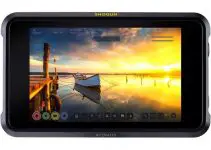Well, I think this is most certainly possible. But, does it matter? I think it does – I think it is very possible that the upcoming Sony a7s III may use the new CFexpress media cards as primary recording media for 8K and even 4K Raw. I’ll explain my theory in the following paragraphs.
Before I continue, I must stress the following – my assumptions are not based in any way on “industry insider” knowledge (which I do not have), nor any other non-public information. I am simply basing my assumptions, speculations, and opinions on publicly available market data and industry happenings over the past year or so. For all I know, I may be completely wrong, and if that happens you can happily tell me in the comments below after the a7sIII is announced (whenever this ends up happening).
So, what the hell is CFexpress and why should you care?
CFexpress 1.0 (Type B) is a new recording media that shares the same form factor as XQD that many Sony FS7 owners will be familiar with. CFexpress has been designed specifically for the ever-increasing data speed demands of the next generation of up upcoming digital cameras – be it mirrorless or S35/FF camcorder form-factor.
CFexpress is compatible with XQD devices (which have to updated via firmware in order to accept the CFexpress cards) and adopts the latest Quad-lane PCIe Gen 3 controller as standardised by the CompactFlash Association.
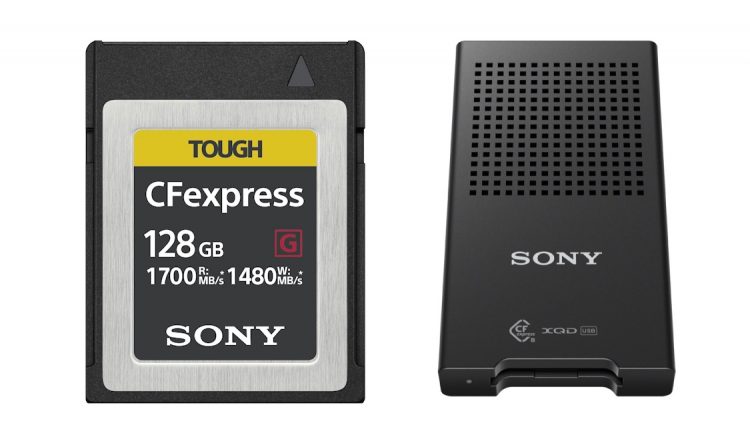
Image by Sony
CFexpress offers sustained data write speeds of 1300MB/s (ProGrade Cobalt series CFexpress) and currently Sony and ProGrade are offering such cards with capacities ranging from 120GB to a whopping 1TB.
Sony announced they will start selling CFexpress Type B memory cards initially with 128GB capacity, however higher capacity cards with 256 GB and 512 GB capacities are planned for the future. I will no be surprised to see the next generation Sony FS7/FS5 cameras to use CFexpress as well.
Will it make an appearance on the A7s III as a huge surprise – possible, given how Sony will want to push the A7s III as the next big thing, it would make sense to give it the latest, future-proof recording media.
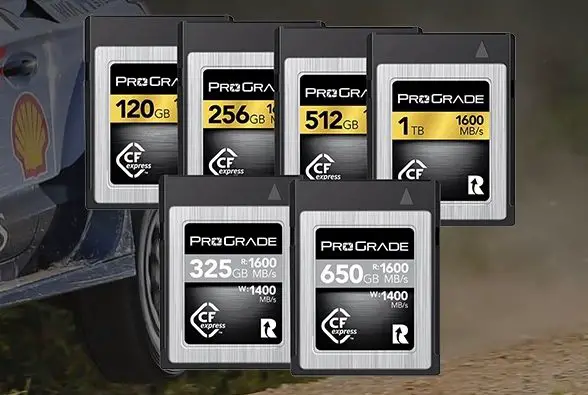
Image by ProGrade
The ProGrade CFexpress cards (like the Sony ones) use a Non-Volatile Memory Express (NVMe) host controller interface and are available under the GOLD or COBALT designation.
The ProGrade GOLD CFexpress cards are available in 120GB, 256GB, 512GB and 1TB capacities and offer sustain burst write speeds of between 600MB/s and 1,000MB/s with a minimum sustained write speed of 300MB/s for 256GB and up (120GB seems really weak at just 100MB/s sustained).
The ProGrade Cobalt label CFexpress cards on the other hand are only available in 325GB and 650GB capacities, but can sustain minimum write speeds of 1,300MB/second making them perfect for 8K HEVC or compressed 4K Raw.
ProGrade CFexpress Data Rates Tables:
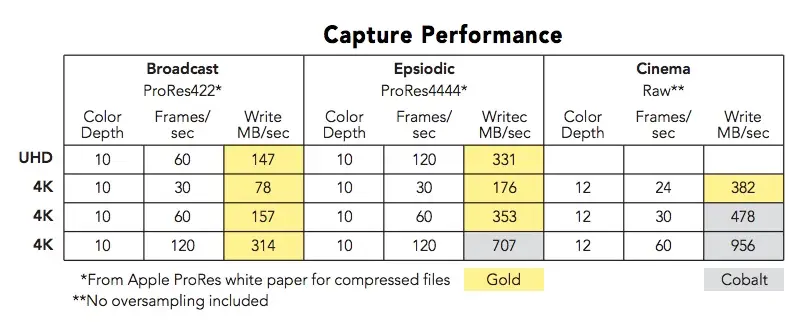
Table by ProGrade

Table by ProGrade
CFexpress has the potential to dramatically improve workflow efficiency in both transfer speeds on ingest as well as editing.
The table below above shows a 4K video file with a total length of 1 hour, which yields 636GB transferred in just under 12 minutes from a ProGrade CFexpress card to a workstation using a ProGrade Digital USB 3.1, Gen 2 reader at a real-world transfer speed up to 900MB/sec. This is better performance than even CFast 2.0, which is on its way out too.
Read more about the ProGrade CFexpress cards here.
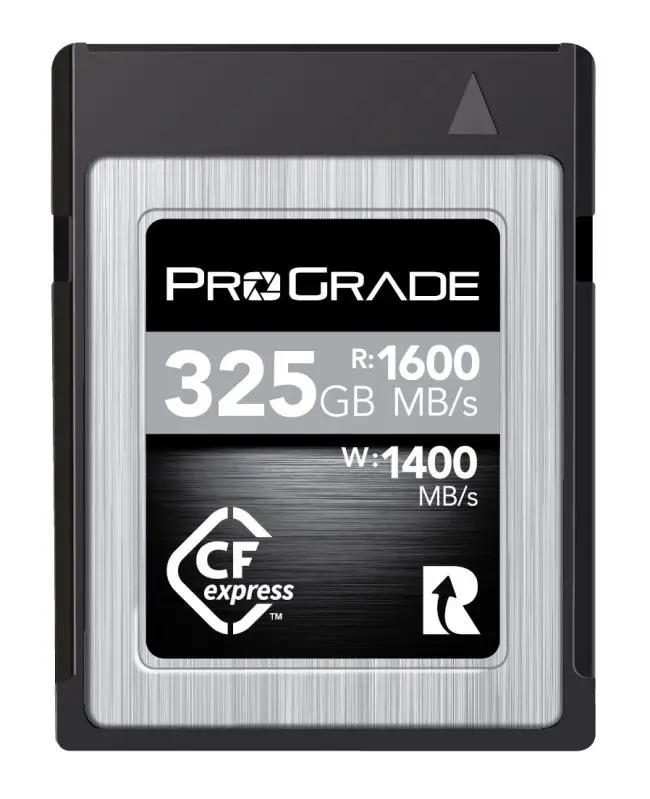
CFexpres Cobalt Series by ProGrade
CFexrpress for 8K HEVC and 4K Raw! Will the A7s III even shoot 8K or 4K Raw?
Forget 8K, nobody needs that right now. I doubt anyone would need 8K in 5 years. I love RED and what they do, but right now in 2019, 8K is a far from any form of major adoption as you could get. Yes, this sort of acquisition technology is in its infancy, and it has only been embraced by early-adopters, who want to be at the forefront of the latest no matter the cost.
The problem is that traditional media in the form of broadcast TV has been so slow in adopting 4K (not to mention it took more than 10 years for HD to gain a foothold, and even today most of the channels are still transmitting in 572p land…) so any form of 8K transmission apart from one-off major events such as the 2020 Olympics or something huge like a SuperBowl, would not make a dent. At least not now. In 5-10 years maybe, but that’s a difficult conversation I’d rather leave to much smarter people than me. I am happy with 2K if you as me.
I think the Sony a7S III should be able to record 4K 10bit as well as 4K Raw. Internally. It should and it must, in order for Sony to have a truly competitive product and an even bigger success than the previous 2 generations were.
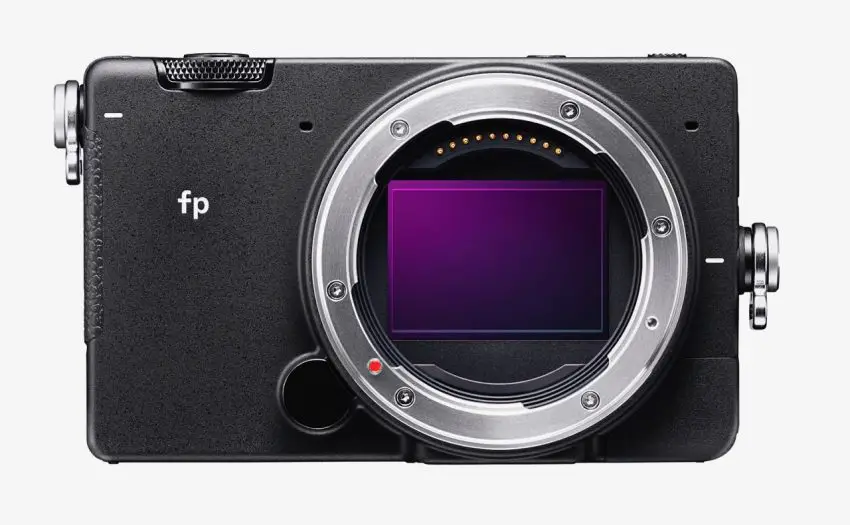
Image by Sigma
If Sigma figured out how to get Raw out of the upcoming Sigma fp (yes, I know it will be external), I am sure that Sony with all the brains, money, and R&D at their disposal, they surely can figure out how to safely record 4K raw internally onto CFexpress without the camera exploding.
Even if we don’t get 4K raw, which I admit – this is quite the stretch at this point (but hey look at the BMPCC 4K – it can do it onto CFast 2.0 and SSD), and given Sony’s poor heat management issues with past mirrorless cameras, 4K raw internally in a full-frame Sony mirrorless camera may just be unicorn.
But, Sony top brass have hyping up their upcoming a7s III themselves – as something that will “exceed expectations”. You can read the interviews, just google them. So, for me – 4K raw would be surpassing expectations. 4K 10bit internal – now that is meeting expectations. There is a difference.
Low-light performance has been solved. We don’t need a camera that can see in the dark at 1,200,000 ISO. That’s just a marketing gimmick and it’s stupid.
Sony a7s III – 4K 10bit internal, 4K Raw (hell even license it) onto CFexpress. Make it happen, Sony!
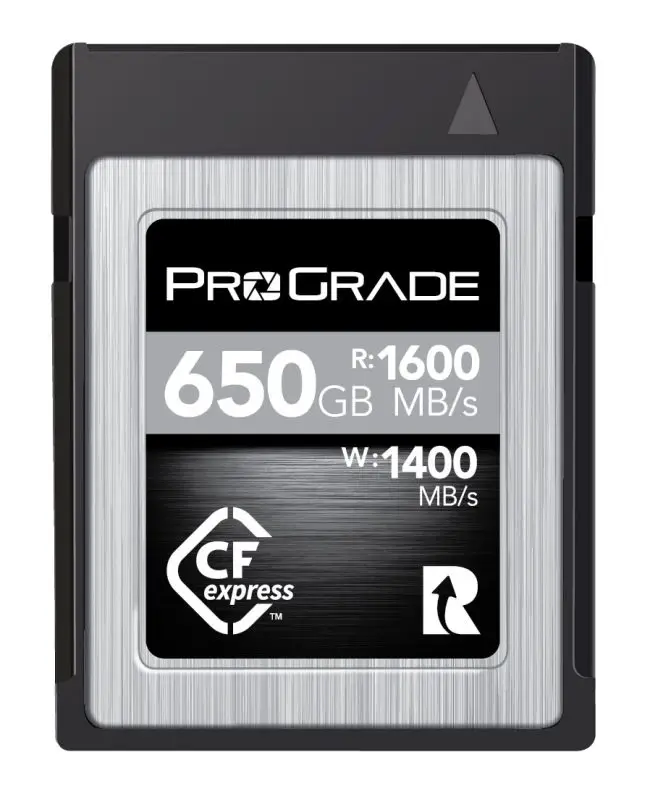
Image by ProGrade
Plot twist – What if the a7S III has 1x CFexpress card slot and 1x SD card slot?
Record 8K and 10bit 4K internally onto CFexpress and anything else on the SD card (which can also do a H.264 backup) – yes, that would certainly be helpful. Will it happen? Who knows, but I think this is a good idea – to have some redundancy and also a more robust media such as CFexpress for the highest quality video formats.
The Sony A7s III will be used a crash cam, C-CAM etc in just about every big budget movie shot on the VENICE and Sony should be pushing it as the “baby” VENICE. I am basing this on observations from the industry – from friends, colleagues, colourists, and industry professionals who use the current (and now ageing) Sony A7s II in big productions – be it big brand commercials or feature films.
Summary – CFexpress or stick with SD?
Well, CFexpress cards will be more expensive, initially at least, compared to SDXC media (which is slower and less robust in terms of reliability). For many current a7s II owners a chance of media would definitely suck, but if Sony are serious about making the a7s III the groundbreaking camera they are hyping it to be – then the camera will need a more reliable way to record and store your video files.
In the end, this could all be just bullshit and I may be totally wrong – the Sony A7s III may end up being a massive disappointment and record onto miniDV for all I know…
But more importantly than what I think, I’d love to read your thoughts in the comments below on what the Sony A7s III should have in terms of features and functionality that would make you want to spend your hard earned cash and buy it.
This September, the current Sony A7s II will officially be 4 years old. In camera years, 4 years old equals retirement age.
IBC 2019 is happening in mid-September and I won’t be surprised to see the A7s III announced in Amsterdam, just like the a7s II back in 2015.
Disclaimer: As an Amazon Associate partner and participant in B&H and Adorama Affiliate programmes, we earn a small comission from each purchase made through the affiliate links listed above at no additional cost to you.



